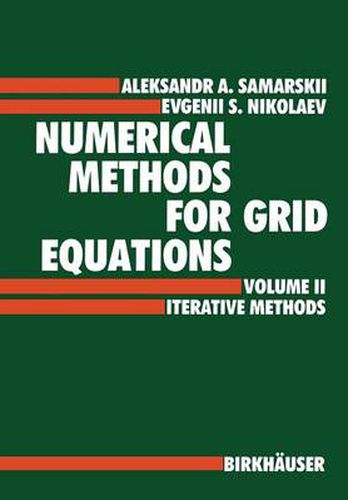Readings Newsletter
Become a Readings Member to make your shopping experience even easier.
Sign in or sign up for free!
You’re not far away from qualifying for FREE standard shipping within Australia
You’ve qualified for FREE standard shipping within Australia
The cart is loading…






This title is printed to order. This book may have been self-published. If so, we cannot guarantee the quality of the content. In the main most books will have gone through the editing process however some may not. We therefore suggest that you be aware of this before ordering this book. If in doubt check either the author or publisher’s details as we are unable to accept any returns unless they are faulty. Please contact us if you have any questions.
The finite-difference solution of mathematical-physics differential equations is carried out in two stages: 1) the writing of the difference scheme (a differ- ence approximation to the differential equation on a grid), 2) the computer solution of the difference equations, which are written in the form of a high- order system of linear algebraic equations of special form (ill-conditioned, band-structured). Application of general linear algebra methods is not always appropriate for such systems because of the need to store a large volume of information, as well as because of the large amount of work required by these methods. For the solution of difference equations, special methods have been developed which, in one way or another, take into account special features of the problem, and which allow the solution to be found using less work than via the general methods. This work is an extension of the book Difference M ethod3 for the Solution of Elliptic Equation3 by A. A. Samarskii and V. B. Andreev which considered a whole set of questions connected with difference approximations, the con- struction of difference operators, and estimation of the ~onvergence rate of difference schemes for typical elliptic boundary-value problems. Here we consider only solution methods for difference equations. The book in fact consists of two volumes.
$9.00 standard shipping within Australia
FREE standard shipping within Australia for orders over $100.00
Express & International shipping calculated at checkout
This title is printed to order. This book may have been self-published. If so, we cannot guarantee the quality of the content. In the main most books will have gone through the editing process however some may not. We therefore suggest that you be aware of this before ordering this book. If in doubt check either the author or publisher’s details as we are unable to accept any returns unless they are faulty. Please contact us if you have any questions.
The finite-difference solution of mathematical-physics differential equations is carried out in two stages: 1) the writing of the difference scheme (a differ- ence approximation to the differential equation on a grid), 2) the computer solution of the difference equations, which are written in the form of a high- order system of linear algebraic equations of special form (ill-conditioned, band-structured). Application of general linear algebra methods is not always appropriate for such systems because of the need to store a large volume of information, as well as because of the large amount of work required by these methods. For the solution of difference equations, special methods have been developed which, in one way or another, take into account special features of the problem, and which allow the solution to be found using less work than via the general methods. This work is an extension of the book Difference M ethod3 for the Solution of Elliptic Equation3 by A. A. Samarskii and V. B. Andreev which considered a whole set of questions connected with difference approximations, the con- struction of difference operators, and estimation of the ~onvergence rate of difference schemes for typical elliptic boundary-value problems. Here we consider only solution methods for difference equations. The book in fact consists of two volumes.